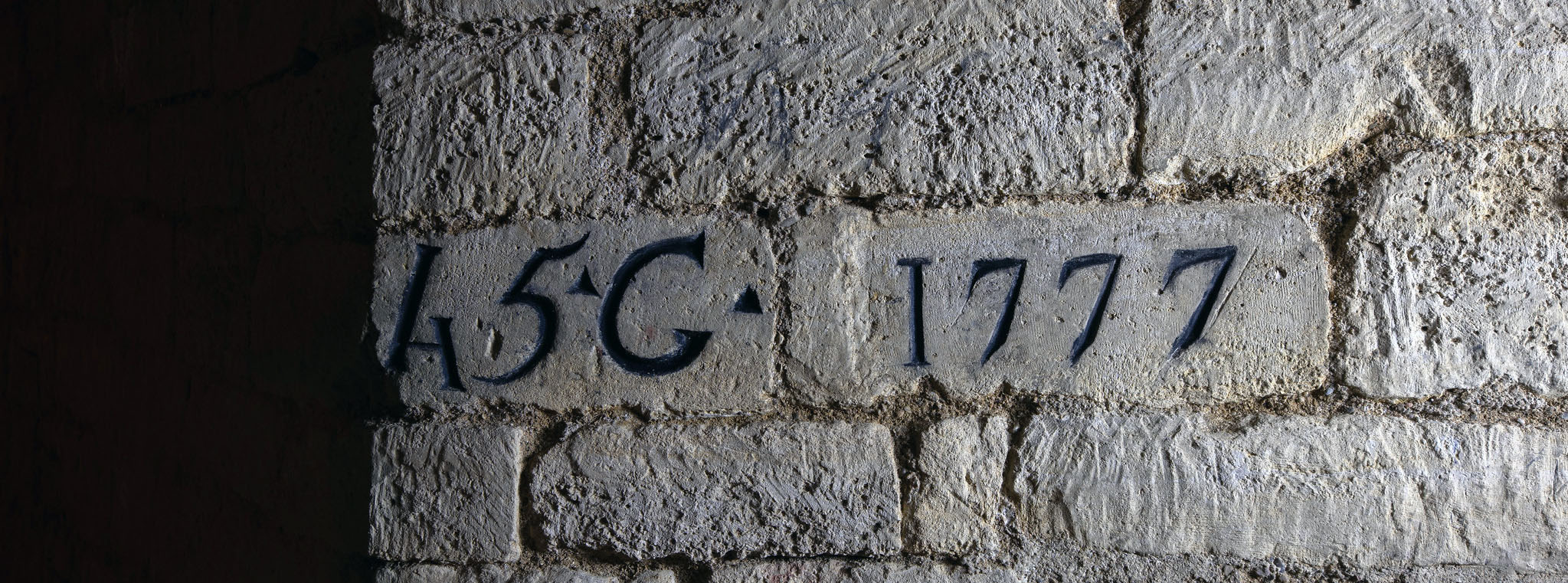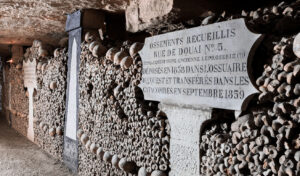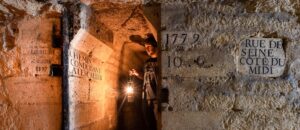Discover a unique place in the underground quarries of Paris, located under the Cochin hospital; the Capuchin quarry, preserved, restored and enhanced by an association since 1983!
Virtual tour :
Introduction
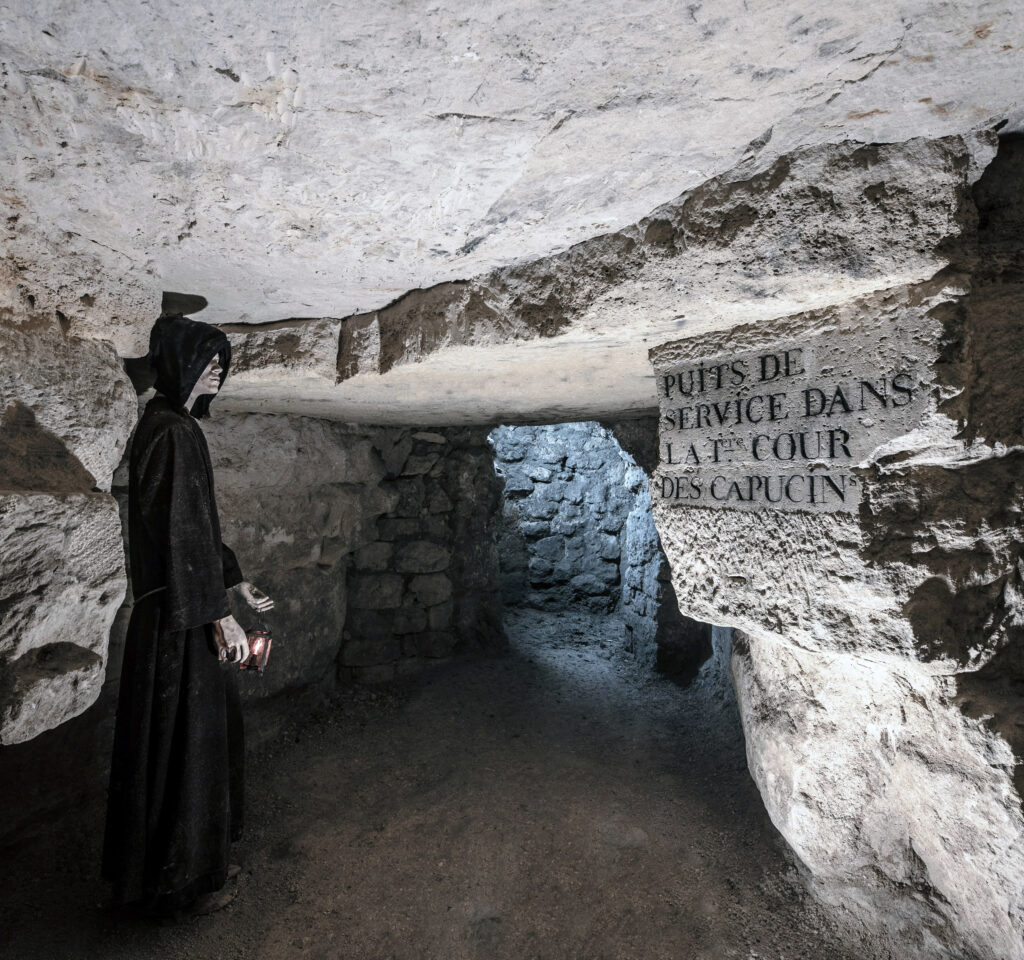
The jewel of the underground quarries of Paris, more commonly known as the Catacombs of Paris, this place is an eco-museum of the association SEADACC (Société d’études et d’aménagement des anciens carrières des Capucins).
The Capucins quarry is accessed by taking a staircase of 119 steps that allows us to descend twenty meters underground. It is a unique site and in an exceptional state of preservation.
The underground quarries located under the Cochin hospital allow you to discover over nearly a kilometer of galleries, the evidence of a place where building stone was extracted during the Middle Ages.
The Capuchin Fountain
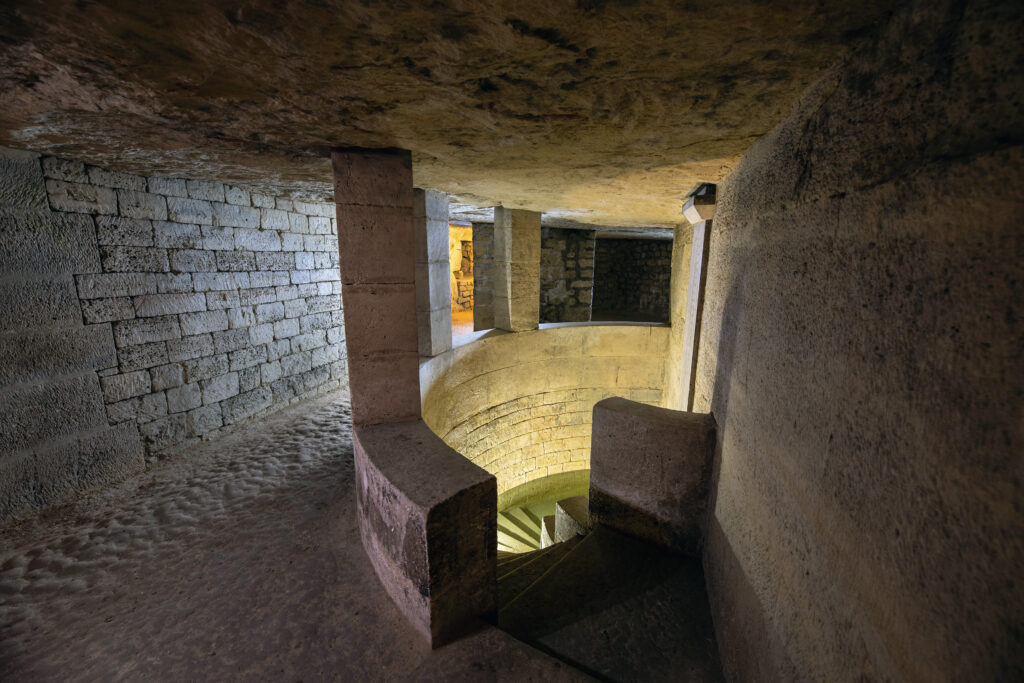
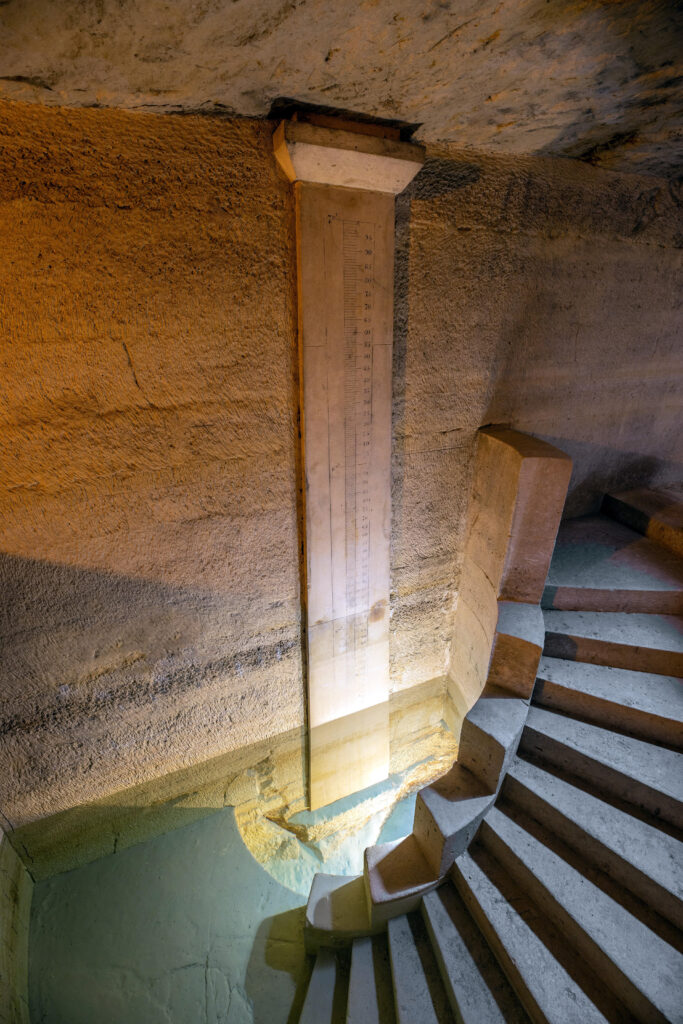
In 1990, the Capucins Fountain was the first underground building to be classified as a Historic Monument in France. Its creation dates back to 1810 and its construction was due to the inspector general of quarries, Mr. Louis-Étienne Héricart de Thury.
Its function is not to provide water, but to measure the height of the water table.
In the photo opposite, we can see a graduated scale over four meters.
The lowest mark indicates 0 meters. This corresponds to the same level as the graduated scale of the Pont des Tournelles, the former reference point for the zero altitude of the low water of the Seine. In order to create the semi-circular coping and the steps of the fountain, a few meters further in the gallery, we find a life-size drawing, also classified as heritage. It allows us to estimate the size of the blocks needed to create the fountain.
Trémery had this low-water scale carved directly into the stone, making it characteristic of the architectural style of the work undertaken in the quarries of Paris by himself. It is distinguished by its summit decorated with a small Doric capital.
The mineralogy cabinet, also called a curiosity cabinet, is a place where the geological layers from the Lutetian period defined in the grounds of the Paris Basin were displayed on each step of a straight staircase.
This is a reproduction made in 2005 by SEADACC.
On the ceiling, we can see a compass rose indicating the four cardinal points.
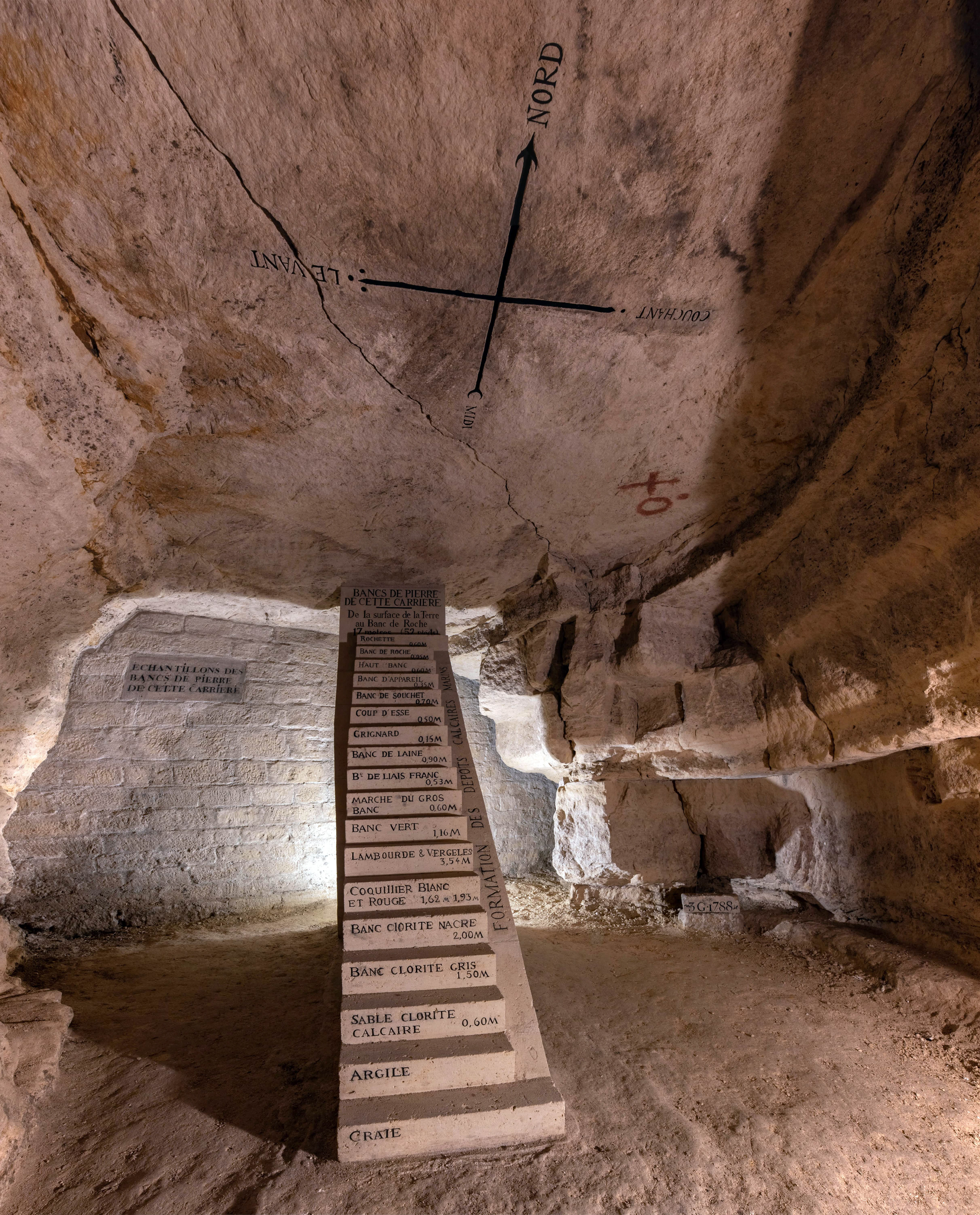
The General Inspection of Quarries (IGC) initially had its offices in the Capuchin enclosure. Therefore, they consolidated this sector first, and the first inscriptions date from 1777, the year the IGC was created.


